In today’s article, we will talk about the most dangerous animals in Africa. And because these are the deadliest animals in Africa, we provide information about their human kill rates per year.
With such incredible biodiversity, Africa is a unique place to spot wild animals. Still, you might want to keep your distance from some since they are considered the deadliest African animals.
They are feared across the continent, and rightly so, because they are either incredibly strong or venomous. Let’s check them out!
Most Dangerous Animals in Africa
From tiny to massive, here are the most dangerous African animals in ascending order:
13. African Rock Python
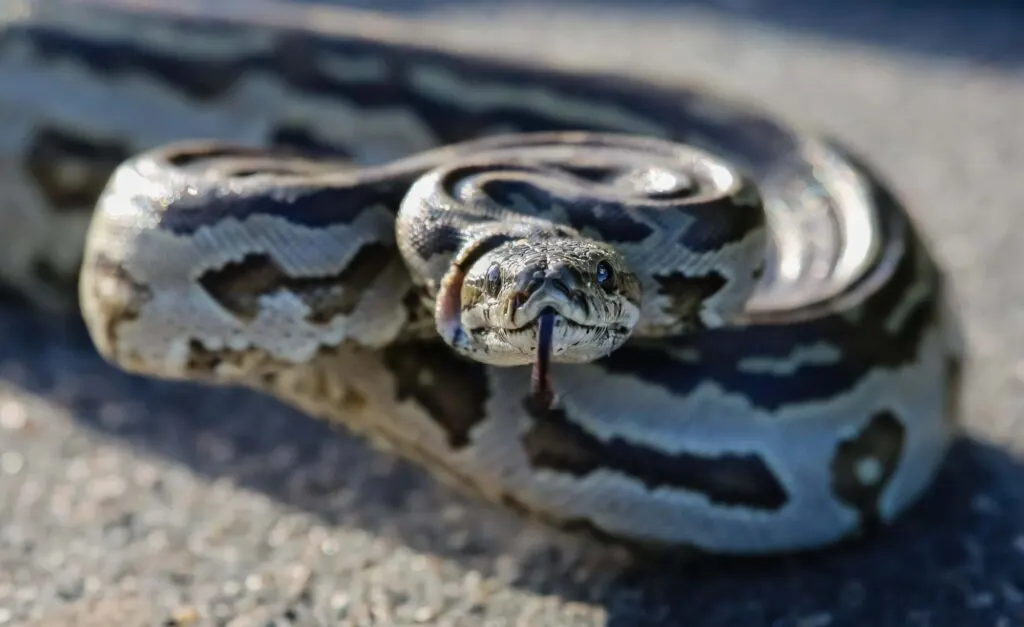
The African rock python is undoubtedly one of the most dangerous African animals. This is not because of its venom but of its aggression.
These huge snakes coil around and compress their prey until it breathes out, at which point they swallow the victim whole using their remarkably flexible jaws.
African rock python lives in the savannas, grasslands, forests, rocky areas, and semideserts of central Africa.
Those fearsome animals typically grow up to 16 feet in length. There is no exact information about the number of human deaths caused by African rock pythons yearly.
But we can say they are undoubtedly merciless snakes that everybody would better avoid.
12. Leopard
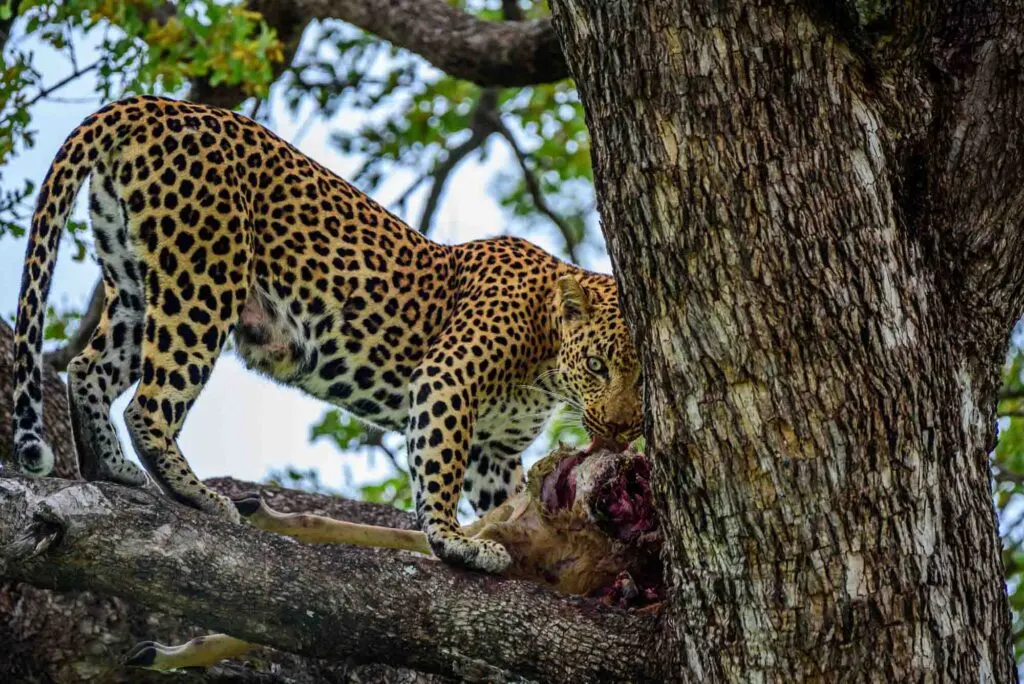
Leopards, native to Africa and found throughout much of sub-Saharan Africa, have a remarkable capacity for habitat adaptation and an incredibly diverse diet.
Although most leopards stay away from people, occasionally, humans may be hunted as prey, making them one of the most dangerous animals in Africa.
Most healthy leopards prefer wild prey over people, though. Still, those who are injured, ill, in need of assistance, or have a scarcity of their usual game may turn to hunting humans and develop an addiction to it.
11. Rhinoceros
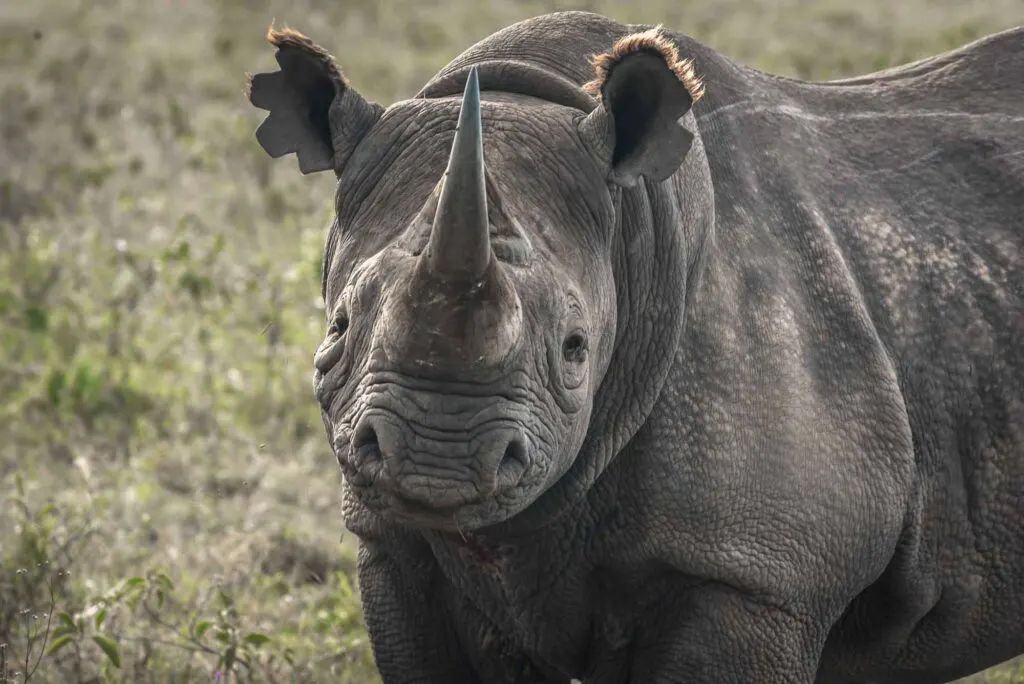
Although rhinoceros attacks are uncommon, they still are among the most dangerous African animals.
Typically, black and white rhinos are threatened by the cars that go on safari in national parks and may assault them. Still, the black rhino is generally more aggressive.
However, just two or three documented attacks each year indicate that they are often not hostile toward people.
Rhinos are among the wild animals with the worst vision because of their infamously poor eyesight.
They reportedly have trouble telling humans and trees apart from a distance of 15 feet or more. They, therefore, rely heavily on other senses such as smell and hearing.
With weights of up to 3,000 pounds, rhinos are the second-largest and most powerful mammals behind elephants in terms of size.
You should always maintain a safe distance and avoid approaching older males or rhino mothers with young babies.
10. Great White Shark
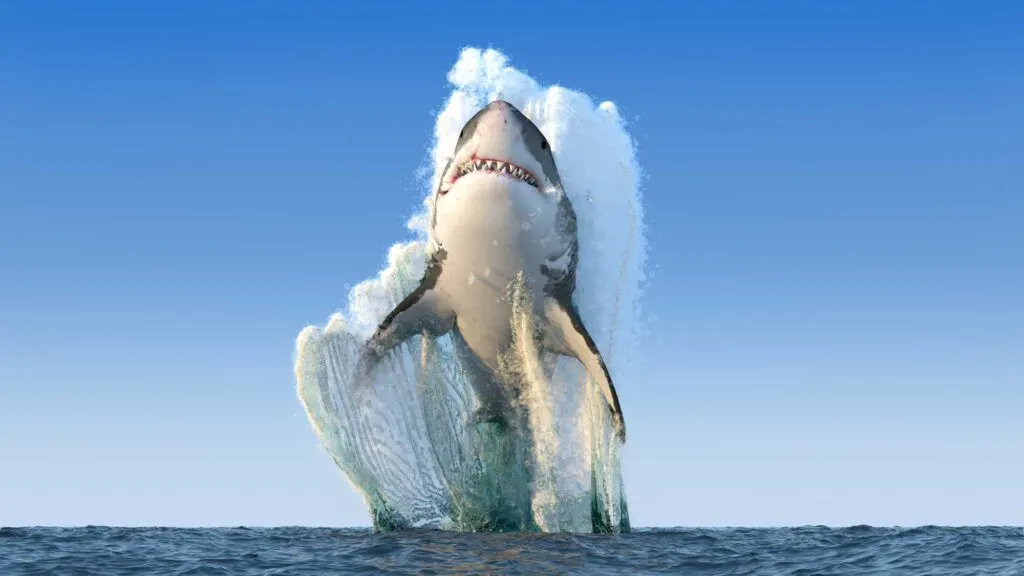
The great white shark is responsible for approximately two human deaths every year in Africa.
They may reach lengths of 20 feet and weights 6,000 pounds. Great white sharks can swim at a peak speed of 35 mph thanks to their muscular tails and torpedo-shaped bodies.
Also, they have 300 sharp teeth within their jaws that are made to shred flesh.
Typically, those giants are not interested in humans unless they are very hungry and will leave individuals alone after a single bite.
However, in approximately 20% of cases, the harm has already been done, and the victim passes away from blood loss.
9. Puff Adder
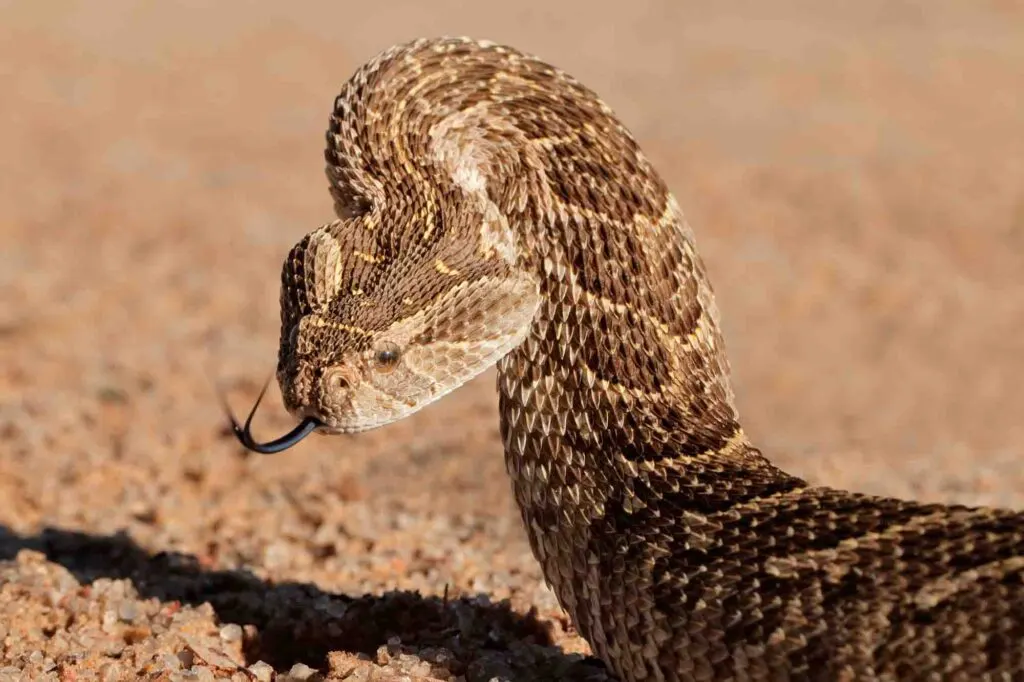
The puff adder made this list of dangerous animals in Africa but also the list of most venomous snakes.
Although the puff adder is not Africa’s deadliest snake, it is thought to cause the highest number of snake bite fatalities in the continent – somewhere around 32,000.
This is because of its vast habitat, aggressive personality, and excellent concealment. If not treated, its large fangs and strong venom result in death rates of up to 20%.
Puff adders can be as long as 3 feet in length. They are nocturnal animals that rely on camouflage for protection. Those deadly snakes are found almost everywhere in Africa except in the deserts and rainforests.
8. Black Mamba
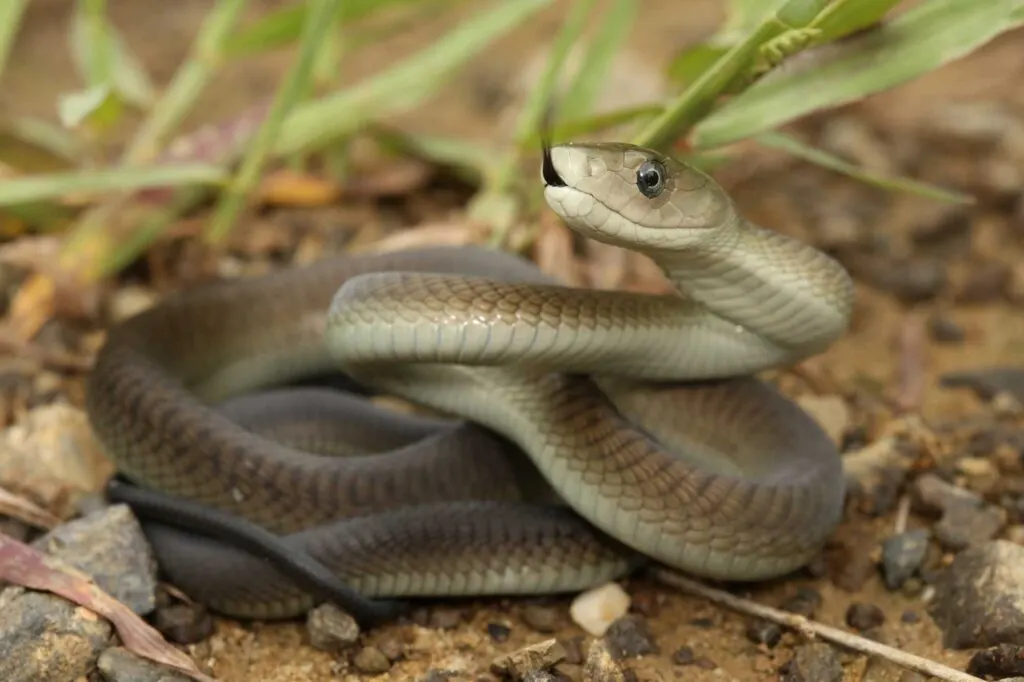
The black mamba can be considered the most dangerous animal in Africa. With a maximum length of 14 feet, it is the biggest venomous snake on the continent and the second biggest venomous snake in the world—only after the king cobra.
The black mamba venom is so dangerous that two drops only are enough to kill a person.
This dangerous snake has a 100% death rate if the bite is not treated properly. It typically injects a high amount of venom in one bite, and therefore, it can cause asphyxiation and cardiovascular collapse very fast.
In South Africa, locals refer to the black mamba bite as the “kiss of death.”
Something that makes these snakes even more dangerous is their speed: these ambush and pursuit predators are one of the fastest snakes in the world, reaching a speed of 11.8 miles per hour.
Black mambas are typically found in the Southern and Eastern parts of Africa and love to stay in the savannas, woodlands, and rocky hills.
7. African Elephant
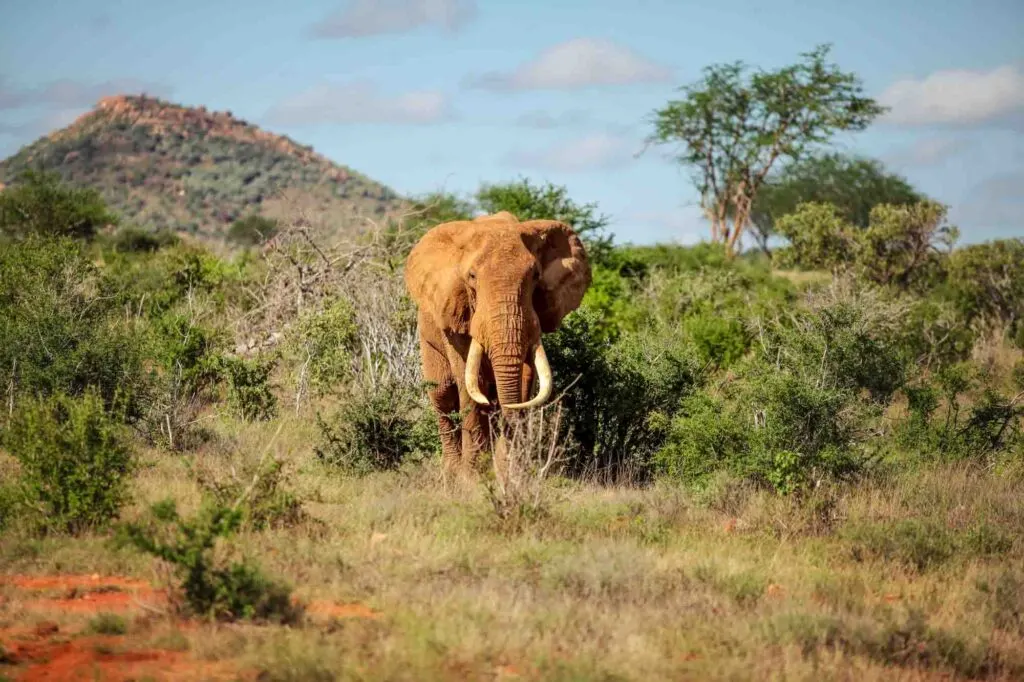
African elephants are well known for being the largest among the three elephant species on the planet.
As unreal as it may sound, an adult African elephant can weigh as much as 14,000 lbs.
They can grow up to 13 feet in height and reach 24 feet in length, putting them on the list of the biggest animals in the world.
Elephants are very social, energetic creatures who live in the hearts of up to a hundred individuals.
Well, you may already know that elephants are herbivores, and therefore, they consume plants and vegetation generally.
But, an interesting fact is that in order to meet the amount that their body requires, they have to eat for 12 to 18 hours a day.
According to estimates, elephants kill 100 people annually. As horrendously high as this number might be, it is still far lower than the 20,000 elephants that are killed in the same time period by poachers.
Elephants frequently come across by local farmers in Africa, where fatal attacks on humans are prevalent.
Elephants are being forced into smaller spaces as a result of habitat deterioration, and they regularly raid and destroy farmers’ crops.
6. Lion
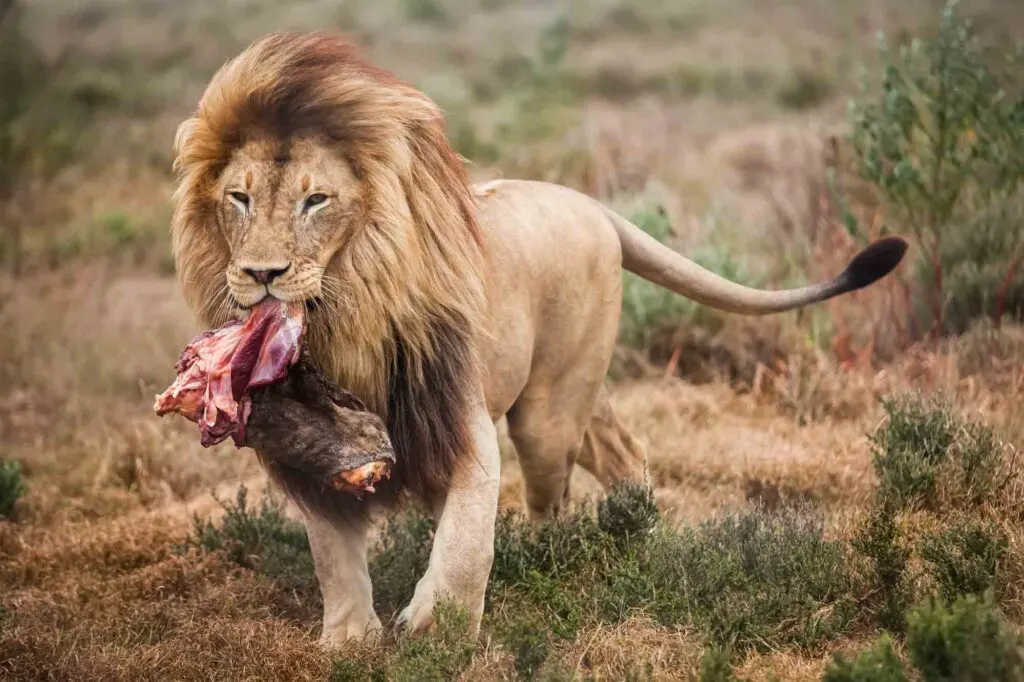
Although the lion is one of the deadliest African animals, this apex predator often perceives people as a threat rather than food.
Most lion attacks on people are said to be carried out by ill male lions looking for an easy meal. In locations where their typical food supply has grown scarce, lions can also hunt humans.
Approximately 100 to 200 people are thought to be killed by lions every year, making them one of the deadliest animals in Africa.
Lions live together as a group and hunt together. The group typically consists of many females, a few males, and cubs.
They cooperate together to hunt, with the females performing the majority of the labor. Lions are said to have night vision which is six times as good as human vision.
Male lions can grow as long as 10 feet and weigh up to 550 pounds. Whereas the females often are smaller in size and grow up to 9 feet in length and 395 pounds in weight.
They live in various environments, including broad plains, dense underbrush, and dry thorn forests.
5. Cape Buffalo
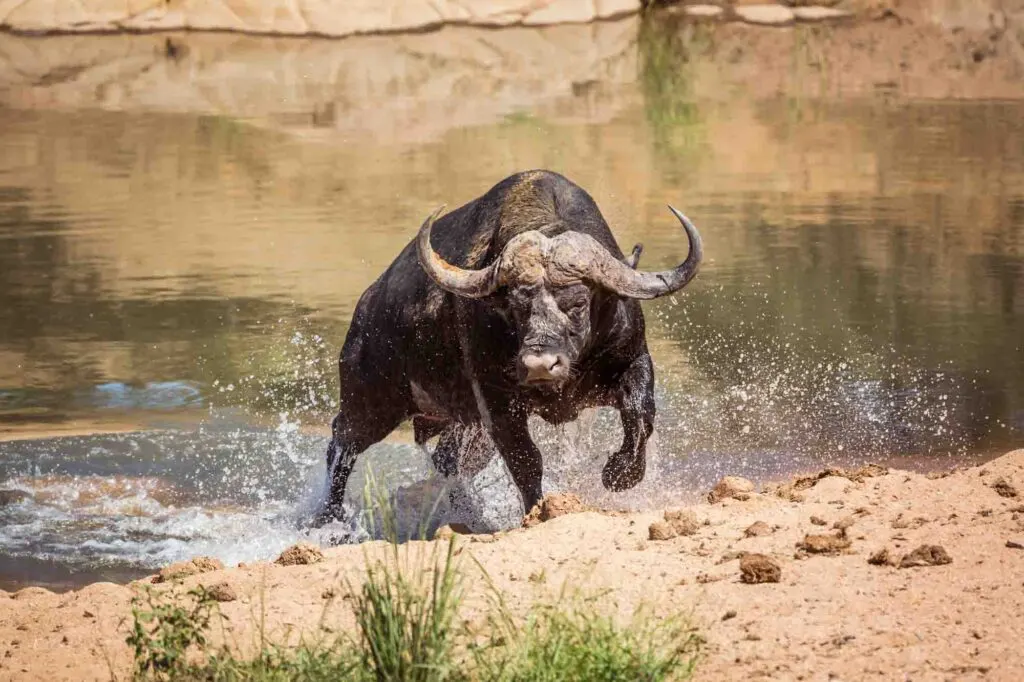
As one of the Big Five, the Cape buffalo, also known as the African buffalo, is responsible for killing over 200 people annually.
Typically, people manage to get away from them, so the number of individuals chased or attacked by Cape buffalos is much larger.
Their enormous, sharp horns may inflict considerable harm during quick, unpredictable attacks.
Cape buffalos are social but deadly animals that live the herds, typically mixed and consisting of hundreds of individuals.
They grow 6 feet tall and may weigh up to 2,000 pounds. Cape buffalos typically prefer to stay in the African Savannahs and Sub-Saharan Africa.
4. Nile Crocodile
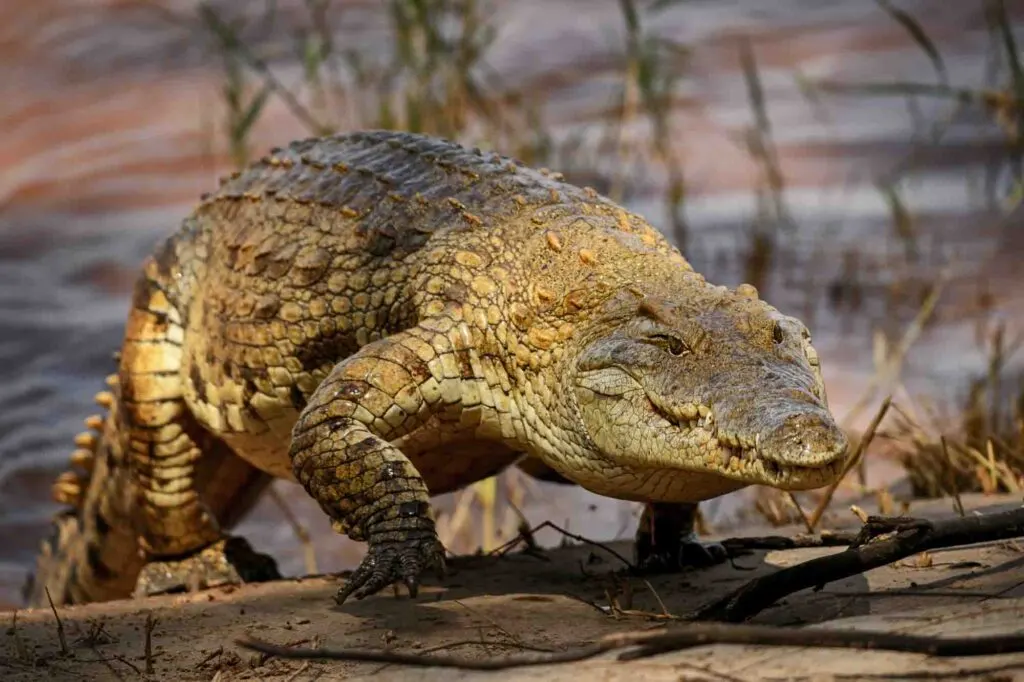
Nile crocodiles are one of the most dangerous animals in Africa. They mainly live in the freshwater and can be found in almost every freshwater river and lake around the continent.
Those dangerous creatures can be very violent and will eventually set on humans if given the possibility. The estimate killed by them every year ranges from 200 to 450 people.
With a maximum length of 20 feet and a maximum weight of 1,650 pounds, Nile crocodiles are among the most dangerous animals in Africa.
This crocodile attacks everything and anything that gets closer. Also, they are known for their ambush hunting tactics.
They often attack by leaping out of the water, seizing their prey in their vicious teeth, bringing them back into the water where they drown them, and then hiding them behind branches or rocks to be eaten later.
3. Hippopotamus
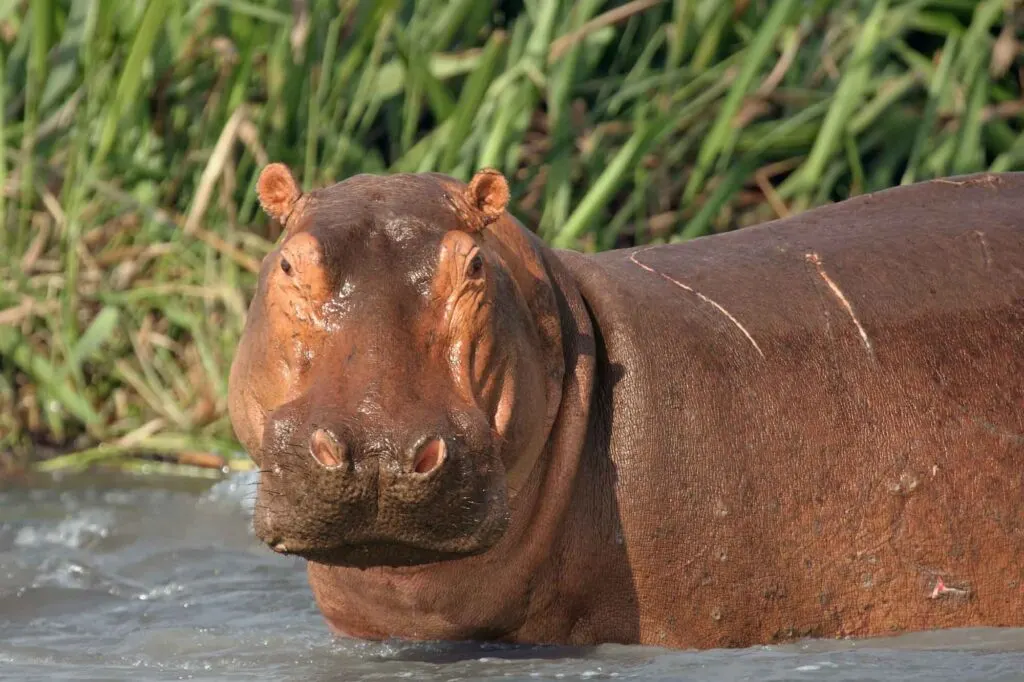
Although they are amusing to see from a distance, hippos are not as calm as they appear. They are actually regarded as the most dangerous mammal in Africa, well, despite being vegetarians.
Male hippos will aggressively protect their territory, and if the females feel the threat towards their babies, oh well, someone better run — and fast.
It is believed that these fiercely protective creatures kill approximately 500 people every year, making them the deadliest mammal in Africa.
It is always recommended to keep a distance from them since adult rhinos can pick up the speed of 19 mph and weigh over 3,300 pounds, putting them among the largest land mammals and the strongest animals in the world.
Not only that, but these powerful animals have canine teeth that may measure more than 20 inches long in males.
Hippos are typically found throughout Africa and are unquestionably adapted for life along banks of rivers and lakes.
Hippos can hear, see, and breathe even when most of their bodies are submerged.
2. Tsetse Fly
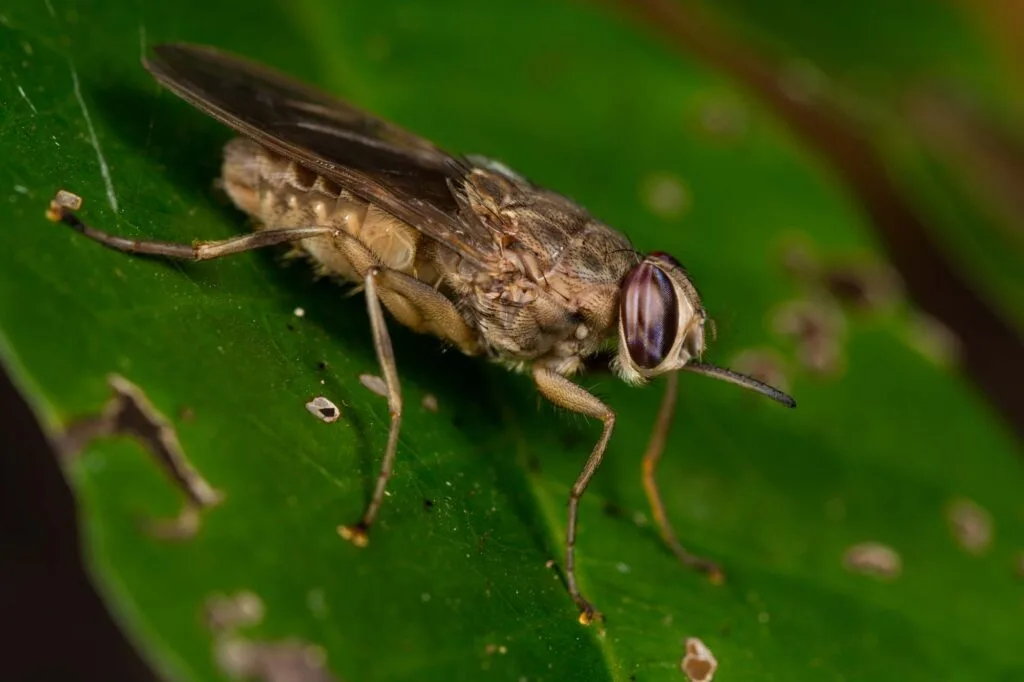
Tsetse flies are around the size of a housefly, measuring between 0.25 and 0.5 inches in length.
The color depends on the species and can be either dark brown or yellowish-brown. Each year, tsetse fly-transmitted diseases kill roughly 275,000 individuals.
Tsetse fly can be considered one of the deadliest African animals and generally reside in sub-Saharan Africa.
The majority choose to live in forested settings. They will remain in the underbrushes of the forest, frequently hiding under boulders or logs.
1. Mosquito
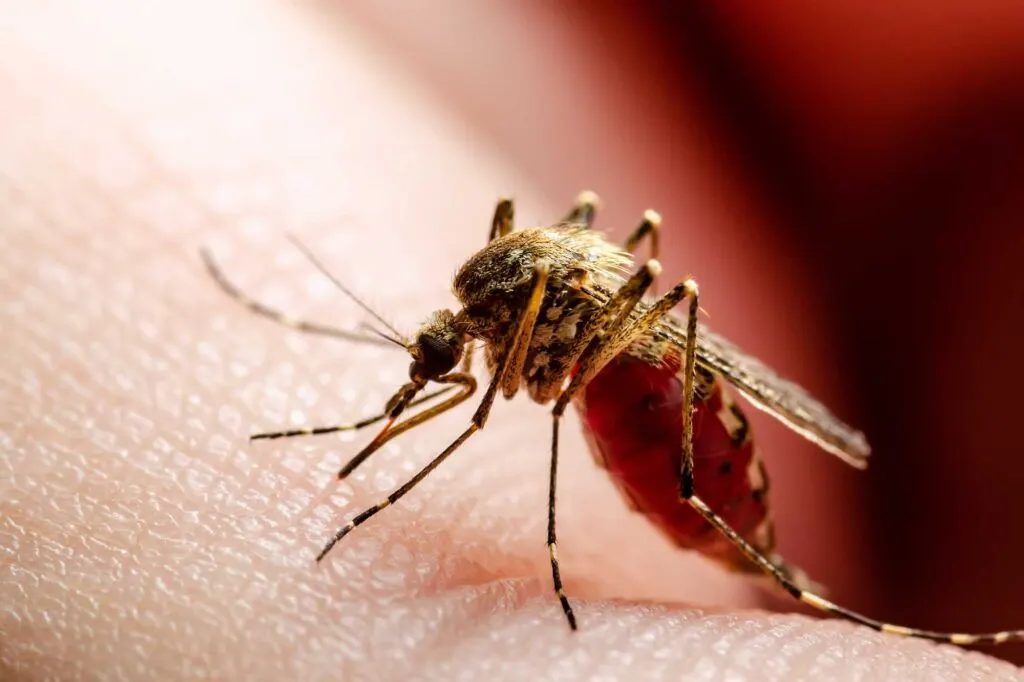
Mosquitos are considered to be one of the most dangerous animals in Africa.
At first sight, you cannot think that they can bring harm. However, mosquito bites are responsible for putting an end to over 1,000,000 lives in a year.
Well, mosquitos do not liquidate people, but the potentially fatal diseases that they carry, are the threats.
Scientists project that those little insects are responsible for spreading more than 17% of the illnesses worldwide, like the west Nile virus, dengue fever, yellow fever, zika virus, and malaria.
Adult mosquitoes are typically about 0.15 to 0.4 inches in length. However, certain species can be even smaller.
The majority of common mosquito adults are around the same size.
While some mosquitoes like to live close to humans, others prefer to live in marshes, forests, or tall grasses. All mosquito species are attracted to the water.
Did you enjoy learning more about the most dangerous animals in Africa? Then share this article with your friends!
